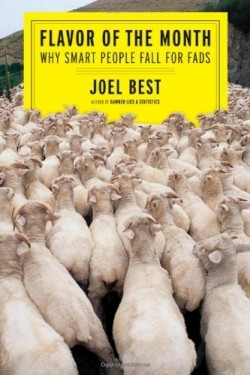Flavor of the Month
Why Smart People Fall for Fads
It is estimated that, in 1958, 25 million hula-hoops were sold in the United States. This overpriced plastic hoop is a classic example of a fad—an event, idea, or object that goes through a fast and wild ride to popularity and an equally fast slide into obscurity. Fads happen with frequency in American culture (remember pet rocks?) and show a remarkably similar overall shape. A fast rise to universal appeal is followed by a fairly short period of popularity and then a rapid demise. This demise leaves people shaking their heads, and wondering, “How on earth did I expect that to last?”
One of the more interesting aspects of a fad is the way people are caught up in the popularity without recognizing the absurdity of the surging cycle of “I have to have this!” Consider, however, that between 1915 and 1924 the sociologist Emory Bogardus tracked fads by asking people to name five current fads. On the list are many honestly obscure fads. Also on the list is “men’s wrist watches.” This highlights the tricky nature of identifying what is a trend or innovation and what is a true fad. This book attempts to understand this phenomenon and explain what makes Americans susceptible to short-lived trends.
The author is professor of sociology and criminal justice at the University of Delaware and an author of numerous books on American culture. He differentiates between fads in popular culture (like hula hoops) and those with more potential for causing lasting damage (like fads in education and business administration). Although the book has a serious message, it is surprisingly amusing, and very insightful into American business and educational culture. Best ties fads, fashions, and innovation to aspects of American culture in a way that is significant and thoughtful. His main premise is that Americans are susceptible because they believe in progress, and because they also believe in perfectibility. As a result, people keep looking for that idea that will solve all problems for all people. Best writes, “…every institutional fad begins with a story about something that is wrong, some shortcoming, some need for improvement … Of course, it is not enough to pose a problem; an institutional fad’s story must also offer a solution.” Best offers a good critique of how fads develop and some insight into avoiding them.
Reviewed by
Peter Terry
Disclosure: This article is not an endorsement, but a review. The publisher of this book provided free copies of the book to have their book reviewed by a professional reviewer. No fee was paid by the publisher for this review. Foreword Reviews only recommends books that we love. Foreword Magazine, Inc. is disclosing this in accordance with the Federal Trade Commission’s 16 CFR, Part 255.

